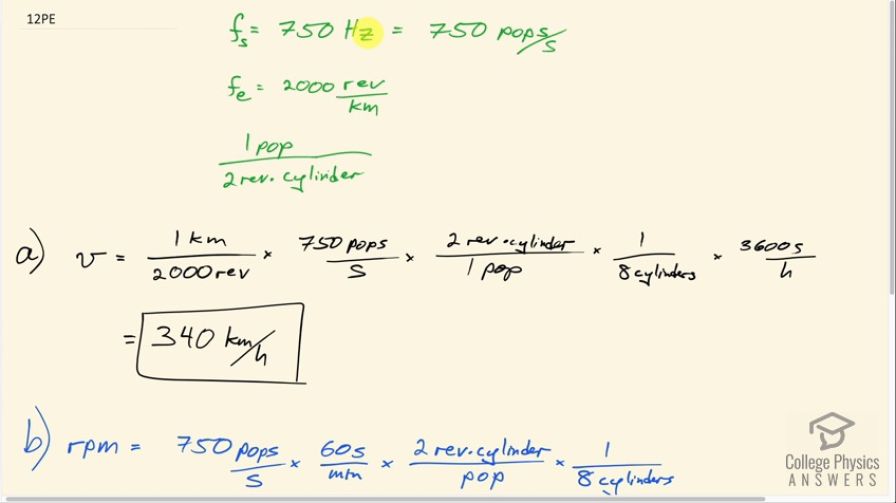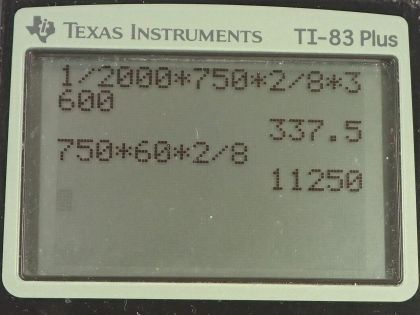Question
Each piston of an engine makes a sharp sound every other revolution of the engine. (a) How fast is a race car going if its eight-cylinder engine emits a sound of frequency 750 Hz, given that the engine makes 2000 revolutions per kilometer? (b) At how many revolutions per minute is the engine rotating?
Final Answer
Solution video
OpenStax College Physics for AP® Courses, Chapter 16, Problem 12 (Problems & Exercises)

vote with a rating of
votes with an average rating of
.
Calculator Screenshots
Video Transcript
This is College Physics Answers with Shaun Dychko. The engine of a race car is making a popping sound at a frequency of 750 hertz so that means there are 750 sharp sounds per second and then we are told that there are 2000 revolutions of the engine per kilometer and then it tells us another connection between the popping sound and the revolutions of the engine to say that there's one pop for every 2 revolutions in each cylinder. So that's 1 pop per 2 revolutions per cylinder and there are 8 cylinders that's the other piece of information I guess we can write down here so there are 8 cylinders, okay! So let's put all this information together to answer question (a) which is what is the speed of the race car? Well the speed is gonna be the distance per time and so let's inspect each of these pieces of information and find one that has a distance in it and that would be this one and we want the distance to be in the numerator so we write 1 kilometer for every 2000 revolutions. And then we want to have units of time in the denominator so we inspect the units here and we see that this one has time in the denominator—it's seconds— and so we write 750 pops per second but of course this isn't the end of the story because then we have kilometer pops per revolution second and that doesn't make any sense. So then we have to add some other things to cancel the units that we want to get rid of and leave us with the units that we want. So we want to keep these kilometers per second although we want to have it in kilometers per hour so that's why over here we are multiplying by 3600 seconds per hour but I left that detail till the end. First thing we wanna get rid of are these pops and so let's take this detail here and write its reciprocal 2 revolution cylinders for every 1 pop and that means the pop units will cancel, the revolutions will cancel and we are left with kilometer cylinders per second and so then to get rid of the cylinders, we multiply by 1 over 8 cylinders— basically, we are dividing by 8 cylinders, in other words— and there we have it... we have kilometers per second and then we turn that kilometers per second into kilometers per hour by multiplying by 3600 seconds per hour so we are left with this unit and this unit. So that's 1 over 2000 times 750 times 2 divided 8 times 3600 and that works out to 340 kilometers per hour. So the strategy here was... ask yourself what the units are that you want and then look through the information that you are given and see how you can write these factors such that they multiply together to leave you with the units that you want. Questions (b) asks for the revolutions per minute of the engine. So we multiply 750 pops per second by 60 seconds per minute so that now we have the denominator unit taken care of— it's per minute— and then we have to turn these pops into revolutions. So we know that we have two revolution cylinders per pop— that's taking the reciprocal of this detail here— and so the pops cancel but then we need to get rid of the cylinders so we divide by 8 cylinders and that unit cancels and so now we are left with revolutions per minute. So that's 750 times 60 times 2 divided by 8 and that's 1.1 times 10 to the 4 revolutions per minute; this is another way of writing rpm— it's the same thing.
